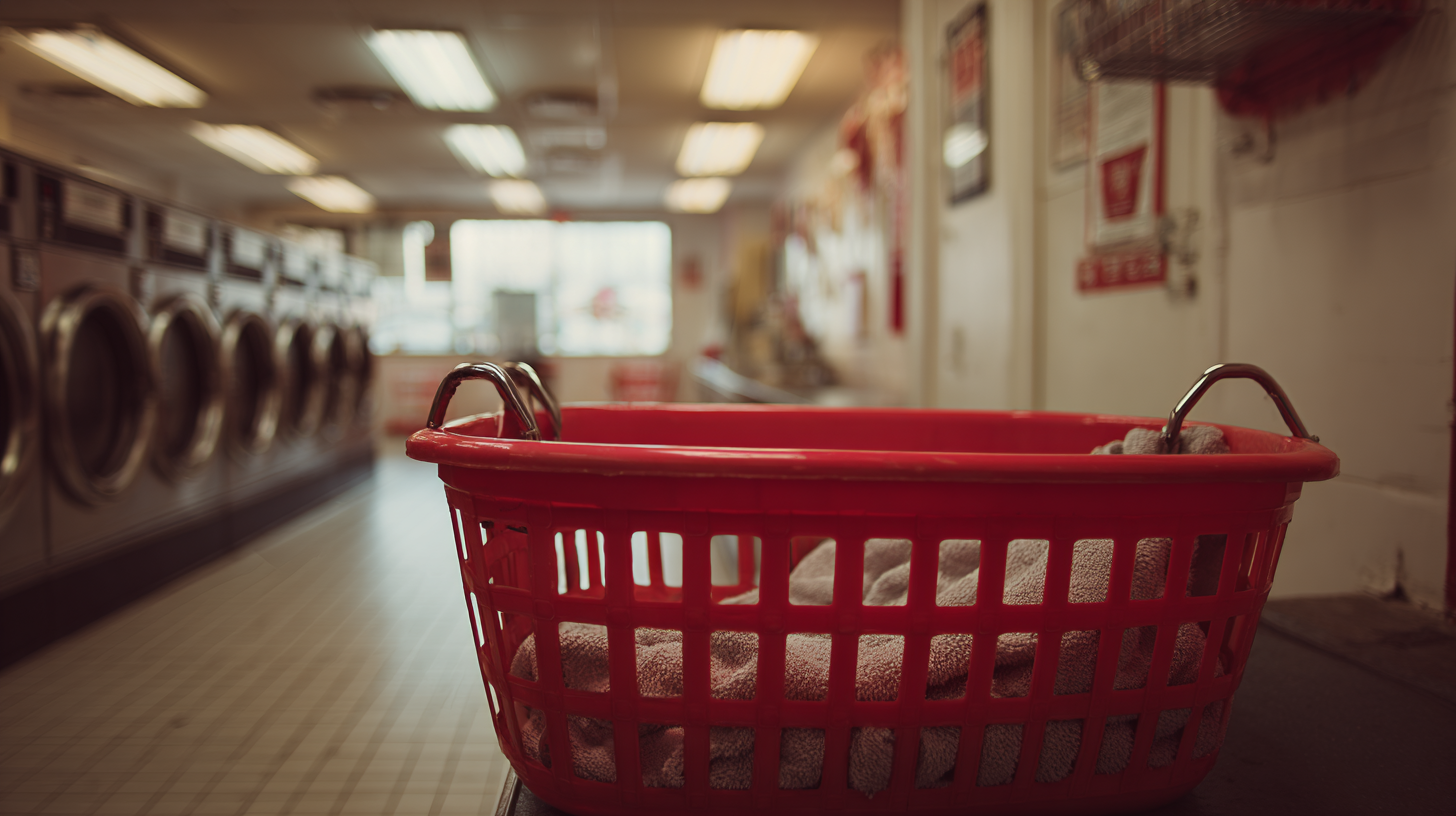Commercial laundry software is a specialized digital solution designed to help industrial laundry operations manage large-scale washing, drying, delivery, billing, and customer service tasks. Used by businesses that serve hospitals, hotels, gyms, uniforms, and linens, this software simplifies everything from order entry to route logistics. Unlike self-service laundromat systems, commercial laundry platforms focus on workflow automation, batch tracking, customer billing, and fleet coordination. The result is a centralized system that reduces errors, improves turnaround times, and increases profitability.
In a fast-paced, high-volume laundry environment, software is your most important tool. It helps operators manage multiple clients, different service levels, and tight deadlines with consistency and accuracy. Whether you’re running an on-premise hotel laundry or a third-party linen service, staying organized is critical to success. Commercial laundry software eliminates manual spreadsheets and scattered processes, replacing them with real-time dashboards and automated reports. From tracking inventory to handling recurring contracts, it becomes the operational brain of your business. For owners and managers, this means less chaos—and more control.
What Is Commercial Laundry Software?
Commercial laundry software is an integrated system that manages key functions such as:
- Client account setup and recurring billing
- Pickup and delivery route management
- Work order creation and batch tracking
- Employee scheduling and shift logging
- Machine utilization and production output
- Invoicing, payments, and reporting
At its core, commercial laundry software centralizes every moving part of your laundry business. It connects the front office with the production floor and the delivery team, keeping everyone aligned on tasks and timelines. Orders can be entered manually or automatically via customer portals, and software tracks each batch from intake to delivery. Machine usage is monitored to detect slowdowns or underperformance. Many platforms also integrate with barcode/RFID scanning to ensure every garment or linen is accounted for. By digitizing the entire operation, commercial laundry software minimizes miscommunication, speeds up production, and reduces costly mistakes.
Why Commercial Laundries Need Specialized Software
High-volume laundry services face unique operational challenges that require advanced tools:
- Managing complex client schedules and billing structures
- Coordinating large pickup and delivery fleets
- Tracking tens of thousands of items per day
- Meeting regulatory requirements for healthcare or food service linens
- Maintaining strict quality control and inventory accuracy
Running a commercial laundry without dedicated software is like running a factory with no production line tracking. The volume and complexity of the work require more than clipboards and spreadsheets. You need automated workflows to ensure linens are washed, sorted, and delivered on time. Regulatory compliance is critical—especially for healthcare laundry services that must track washing temps and sanitization cycles. Software also helps prevent losses, such as missing uniforms or misplaced guest linens. With so many moving parts, specialized software is the only way to stay competitive and compliant.
Key Features of Commercial Laundry Software
Leading commercial laundry platforms include features such as:
- Customer portals for service scheduling and invoice access
- Barcode or RFID item tracking
- Batch management and sorting tools
- Pickup and delivery route optimization
- Automated invoicing and account reconciliation
- Production analytics and reporting dashboards
These tools are designed to improve both operational efficiency and client satisfaction. Barcode and RFID tracking ensures that each item is traceable from intake to return, which reduces shrinkage and customer disputes. Route optimization saves fuel and labor costs while ensuring on-time deliveries. Built-in billing modules reduce manual errors and accelerate payment cycles. Batch management features group laundry loads by client or service type, improving machine scheduling and workflow consistency. Analytics dashboards help identify bottlenecks, underused machines, or top-performing routes. By combining automation and insight, commercial laundry software unlocks better performance across every department.
Improving Client Experience with Software Tools
Client-facing features help improve communication and service quality:
- Online booking and order tracking portals
- Real-time delivery notifications
- Digital proof of delivery (POD)
- Automated invoices and account summaries
- Customizable service tiers and pricing
- Self-service support for reorders or rescheduling
Commercial clients expect speed, transparency, and professionalism—your software can help deliver all three. Giving customers the ability to view orders, track deliveries, and pay invoices online improves trust and convenience. Real-time updates and proof-of-delivery images reduce questions and strengthen accountability. Automated billing and service reports keep business clients informed and reduce your admin load. You can also customize service packages, turnaround times, and pricing structures to meet different client needs. By offering a seamless digital experience, you position your laundry service as modern, responsive, and reliable. That’s a powerful edge in a competitive market.
Operational Efficiency and Workflow Optimization
Commercial laundry software improves back-end operations by:
- Digitizing work orders and eliminating paper tracking
- Reducing production downtime through maintenance alerts
- Balancing workload across shifts and teams
- Monitoring detergent, chemical, and linen inventory
- Assigning tasks automatically based on capacity
- Integrating with existing ERP or accounting systems
Efficiency gains from software directly impact your bottom line. Work orders no longer need to be written or handed off—technicians and sorters see them in real-time on tablets or screens. You can assign tasks based on machine capacity and operator availability, improving throughput. Automated inventory tracking ensures you’re never out of detergent, chemicals, or rental linens. Predictive maintenance tools flag equipment problems before they cause shutdowns. The system can also sync with QuickBooks, NetSuite, or other ERP tools for easier accounting and payroll management. The fewer bottlenecks and manual inputs you have, the more consistent—and profitable—your business becomes.
Integrating Software with Equipment and Systems
Commercial laundry software often connects with:
- Industrial washers, dryers, and folders
- Barcode scanners and RFID readers
- Accounting and ERP software
- Customer relationship management (CRM) platforms
- Fleet tracking and route management tools
- Compliance and quality control systems
Integration is where the real power of commercial laundry software shines. By connecting with industrial equipment, the software can log cycle times, load volumes, and machine health for better reporting and scheduling. Barcode scanners and RFID readers enable real-time item tracking with minimal human error. Linking CRM data with service history lets you personalize support and upsell services. Fleet tracking integrations help optimize routes and respond to delays. For regulated sectors, integrations with quality control platforms help ensure that hygiene standards are consistently met. The more systems you can bring together under one software platform, the more control you gain.
Choosing the Right Commercial Laundry Software
When selecting software, consider:
- Scalability for future growth
- Industry specialization (healthcare, hospitality, etc.)
- Customization options for workflows and reporting
- Ease of use for floor staff and admin teams
- Training and customer support availability
- Pricing model (per user, per location, or SaaS subscription)
Choosing the right software requires a deep understanding of your workflows, clients, and growth plans. Make sure the platform can handle your current volume and scale easily as your business expands. Ask if the software serves your specific industry—hospital laundries have different needs than hotel services. Customization is key: you’ll want to configure fields, alerts, and reports to match your operation. Also consider how intuitive the system is for employees on the sorting line or route drivers. Good training, onboarding, and technical support are essential for long-term success. Finally, clarify costs upfront so you understand licensing, updates, and potential integration fees.
Final Thoughts
Commercial laundry software is no longer a luxury—it’s a necessity for any industrial-scale laundry operation.
With rising customer expectations and complex operational demands, manual systems just can’t keep up. By centralizing production, billing, delivery, and client communication, commercial laundry software becomes your all-in-one solution. It helps you grow without chaos, cut costs without cutting corners, and deliver exceptional service every day. Whether you serve hospitals, hotels, restaurants, or uniforms, the right platform will help you compete—and win. As the laundry industry continues to evolve, digital transformation isn’t optional. It’s the future—and it starts with the software that runs your floor.








